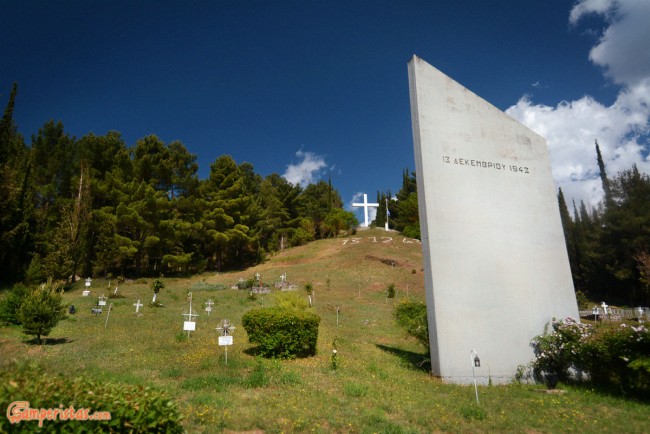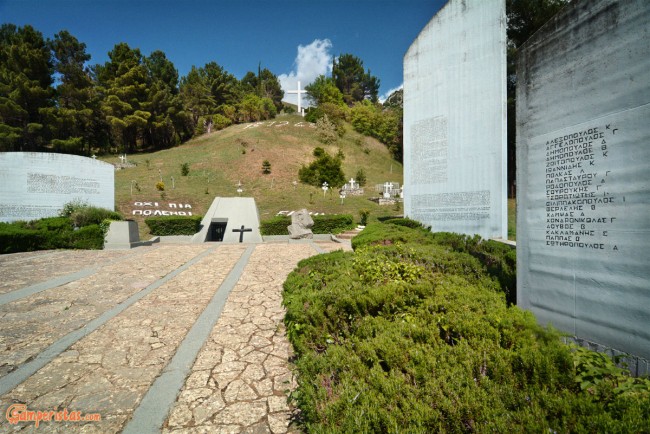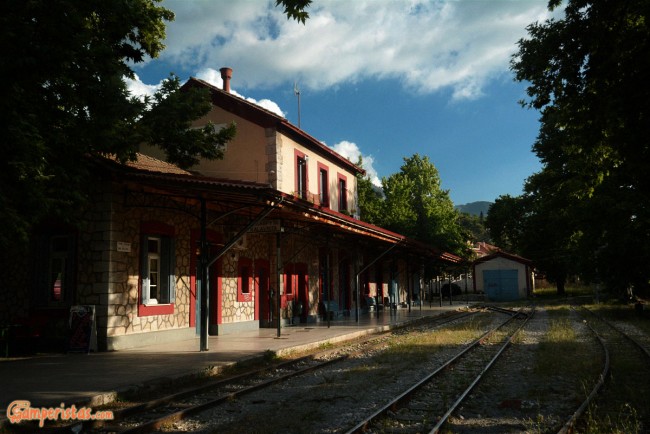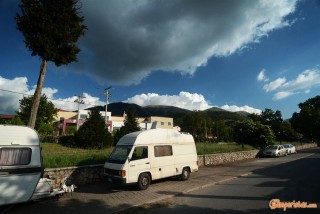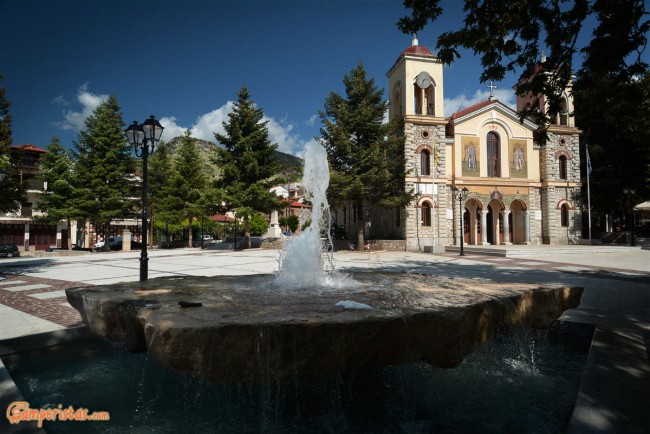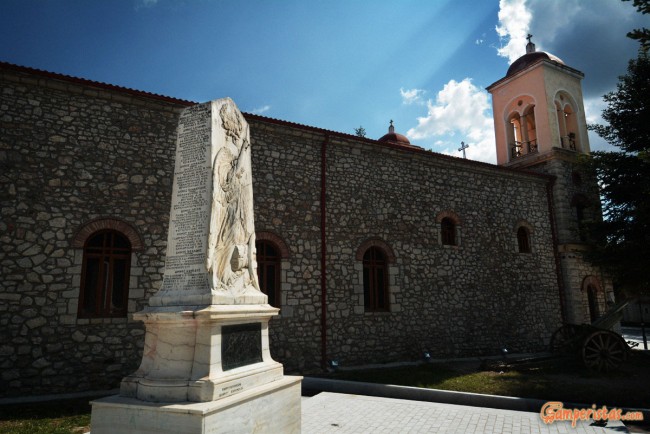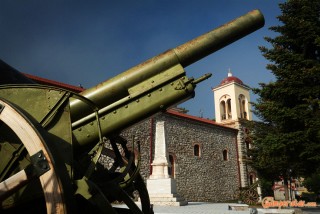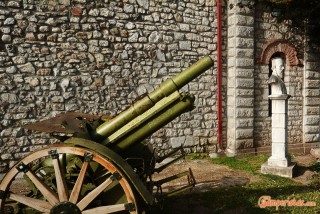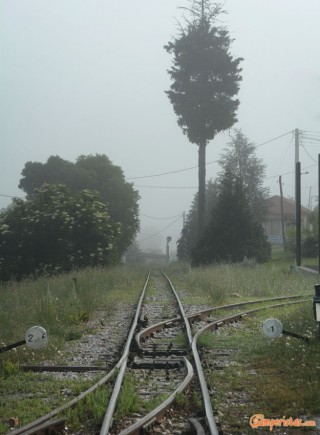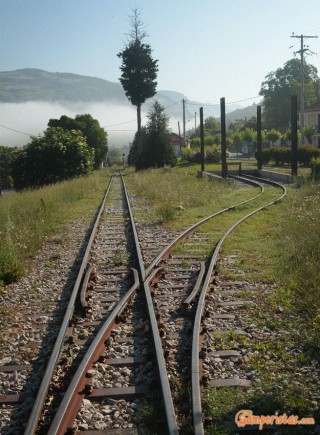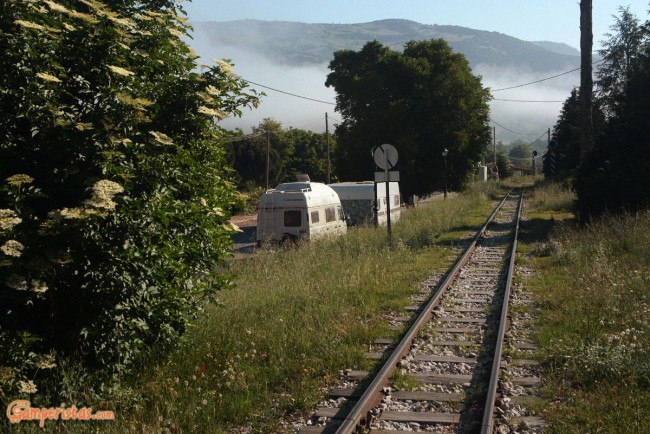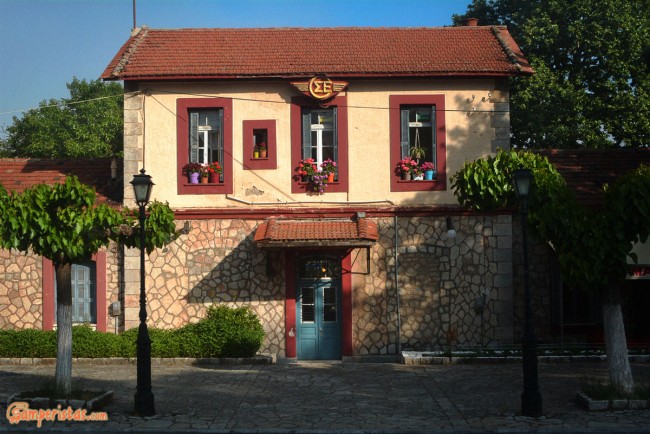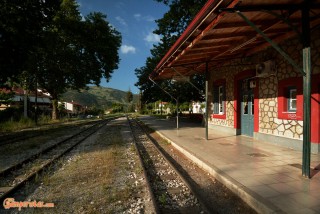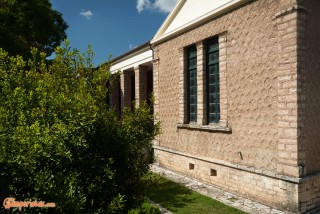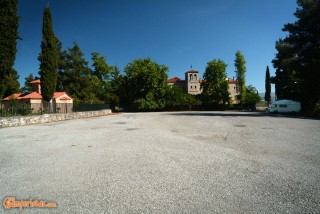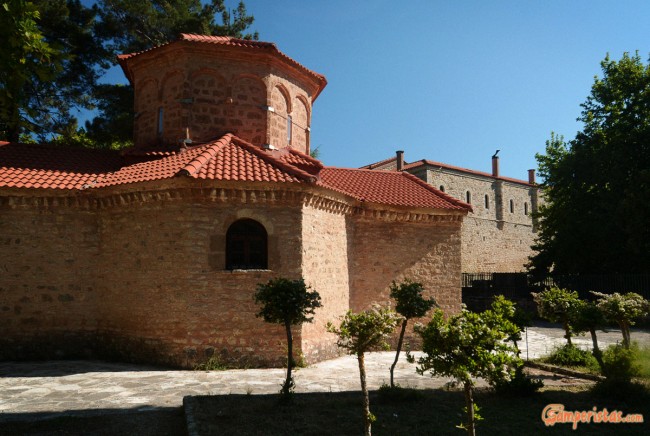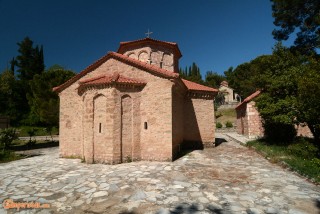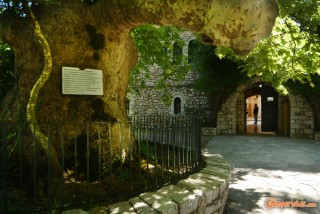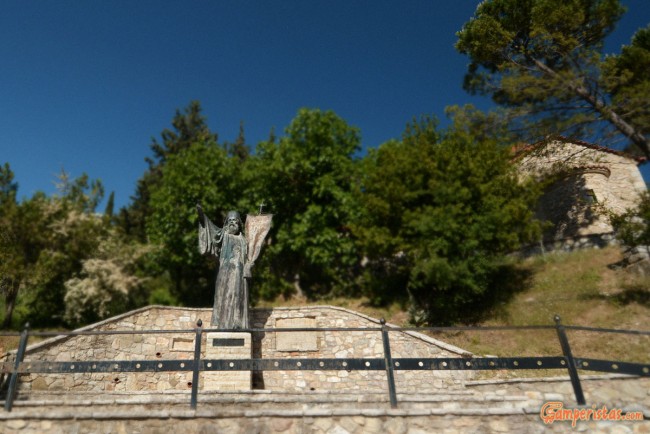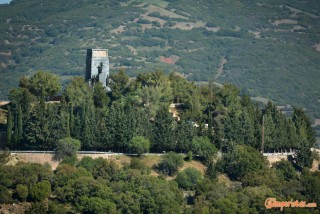
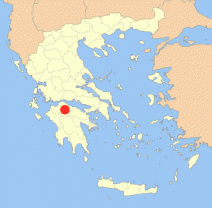 Perhaps it would be difficult to think of Kalavryta as a ‘not to be missed’ tourist destination. Still, this pleasant mountain town is quite popular among both Greeks and foreignner tourists. Key facts : it is the last stop of Odontotos rack railway and a ‘sacred’ place associated with the Greek Revolution against the Ottoman occupation and the resistance to Nazism. Add to this that it is a good starting point to explore the surroundings.
Perhaps it would be difficult to think of Kalavryta as a ‘not to be missed’ tourist destination. Still, this pleasant mountain town is quite popular among both Greeks and foreignner tourists. Key facts : it is the last stop of Odontotos rack railway and a ‘sacred’ place associated with the Greek Revolution against the Ottoman occupation and the resistance to Nazism. Add to this that it is a good starting point to explore the surroundings.
We arrive at Kalavryta early in the afternoon. After a quick exploratory ride we see that, although it’s a town built on an uphill slope, there are some flat areas where we can park. Reassured for our overnight stay we go for a walk. First stop: the site where the Massacre or Holocaust of Kalavrita took place [38.03430,22.11740].
On December 13, 1943, the entire male population of Kalavryta and the nearby villages were shot by the Nazi occupation forces in retaliation for the execution of 78 German soldiers. The number of the Greek males executed on that day, still undefined, is estimated between 700 and 1.000 persons of age 12 and over. It is considered the worst war crime against civilians of WWII in Greece. Besides the executions, the Germans looted and burned thousands of houses, seized livestocks and stole money.
This machine gun that lies just a few steps from the church’s wall, may create a bit of confusion about the clarity of the christian message in Greek Orthodox Church. The truth is that the Greek clergy not only didn’t abstain from the warfare, but in some cases the priests and monks have assumed a leading role. The nearby monastery of Agia Lavra that we will visit next morning is the living example!
We stroll up and down the main street a couple of times and then we take the parallel street where we see this impressive building. It is the “Mansion of Paleologina”, built probably around 1440 and donated to the byzantine princess Ekaterini Paleologou (thus the name). It took its current form during the Turk occupation. Nowadays it is used as cultural center.
We stop to admire the train station, which is really a gem and then we head to the “Municipal Museum of the Kalavritan Holocaust” (photo below right) hosted in the old Primary School building. It was inaugurated in 2005 after an extensive renovation co-funded by the European Union. It is open daily except Monday from 9.00-16.00 and the entrance cost 3 euros; be prepared to affront an absurd prohibition of taking photos. I tried to find out why one can take pictures in the Archaeological Museum of Athens and no here! I can also hardly understand why they decided to follow the “pay to enter” policy. I imagine that they want to have some profit but it seems a little inappropriate in this case, isn’t?
I had the same bitter feeling when I visited the Mauthausen concentration camp in Austria paying a ticket. Things in Mauthausen changed and now the entrance is free! Perhaps the municipal authorities in Kalavrita should reconsider their decision too.
We go to visit the monastery of Agia Lavra, considered one of the most important in Greece from historic point of view: the uprising against the Turks started here on March 25, 1821 when the Bishop Germanos of Patras raised the revolutionary flag and blessed the fighters.
The parking [38.01200,22.08110] is huge and quite refreshing since we are now at an altitude of more than a thousand meters above sea level. At the entrance of the parking there is a toilet for visitors. The monastery is open every morning from 10 am to 13 pm and from 15 to 16 in winter and 16 to 17 in the summer.
Once you pass the entrance gate you will see the old byzantine church, which would be the only worth seeing monument. Unfortunately it is closed. The rest of the monastery is modern and, to be sincere, there is not much to see. Although Agia Lavra monastic complex dates back to the tenth century, it was destroyed and burned several times. The small museum exhibits the original flag of the revolution, and various other artifacts, weapons and ecclesiastical books.
On a hill opposite the monastery there is a monument to the fallen of the 1821 war.

